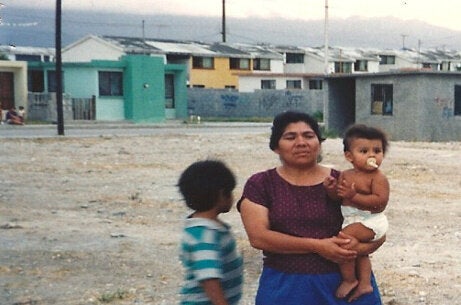
Tara Cookson is a Gates Cambridge Scholar and is doing a PhD in Geography. She is critically exploring the effects of the more recent post-neoliberal policy shifts on women's lives as carers within the Latin American region, focusing specifically on those policies that seek to 'empower' women and alleviate poverty. Photo credit: Tom Shanklin and Creative Commons.
Poverty is by no means a new issue - but the ways in which it is tackled by international, state and non-governmental actors are constantly evolving. Especially since the 1970s, women have been recognised as playing an important role in development. On a global scale, gender equality and female empowerment are recognised as pathways to achieving the UN Millennium Development Goals.
Women feature as the primary actors in many poverty alleviation initiatives and are usually portrayed as responsible, caring, and more likely to invest in household well being than their male counterparts. Microfinance - or the provision of credit to poor women for the purposes of entrepreneurial activity - is perhaps the most visible and well-known example of this kind of development thinking and practice.
Women are targeted in other major development programmes as well. One of the fastest growing initiatives to address poverty is the Conditional Cash Transfer (CCT). CCTs are based on notions of investment and responsibility. Small monthly cash payments, usually around US$35, are given explicitly to poor mothers, who then must meet certain conditions like ensuring their kids have a high rate of school attendance and regular health checks. Mothers are often required to participate in sexual health, nutrition and hygiene classes, as well as 'voluntary' community cleanups. A lot of this is work based on providing care. Failure to meet the conditions results in expulsion from the programme, as also happens if household income goes above the threshold. Women are specifically targeted in CCTs, and men excluded (similarly to most microfinance initiatives).
CCTs are applauded by the World Bank, governments and policy experts across the globe as an economical and efficient way to improve child welfare. Started in the mid-nineties in Brazil and Mexico, whose programmes cover 12.9 million and 5.8 million families respectively, CCTs are currently in 17 of 20 Latin American countries, with regional 'experts' travelling to offer consulting services for start-up CCTs in Africa, Southeast Asia and even New York.
It is important, however, not to celebrate and reproduce gendered programmes like CCTs uncritically. By 'gendered' I refer to the way in which such programmes are structured upon the differences between and among women and men, and the different assumptions we have of what men and women do and are like. CCTs, like microfinance, reflect ideas about poor men and women and what they do - for example, men spend money on themselves and in bars, while women can be relied upon to spend money and time on their children. While statistically these stereotypes may hold some truth, a critical gender analysis probes deeper, asking why men and women allocate resources differently.
In the case of CCTs, looking at gendered impacts involves investigating what happens when men are excluded from a development programme based on responsibility for children's welfare. It prompts questions about impacts on women's own well being and opportunities to be conceived of as individuals with rights and responsibilities outside of their roles as mothers. This kind of critical questioning highlights- and works to dismantle - structures and patterns of gender inequality that are harmful and easily reproduced. What are the structures in place that have 12.9 million families in Brazil unable to keep their kids well fed and in school? What factors contribute to unequal patterns of male and female likelihood to invest money and time in familial well being? Once identified, we can ask: How might we change these?
The widespread implementation of CCT programmes attests to the recognition that poverty can be alleviated through providing care and that women play crucial roles in the development of healthy families and communities. However, programmes that promise better lives for children without working to change harmful patterns of gender (and other) inequality are not likely to bring about meaningful change for the future. Researchers, proponents and critics of poverty alleviation initiatives need to ask: What are the broader impacts of designing development initiatives according to gendered assumptions and stereotypes? What opportunities are constrained or missed for creating sustainable initiatives that impact children, men, and women - equally?
